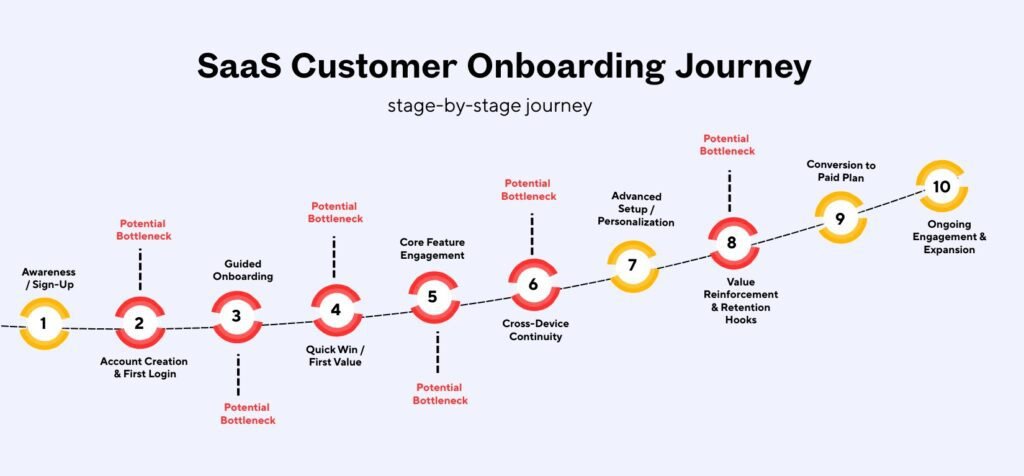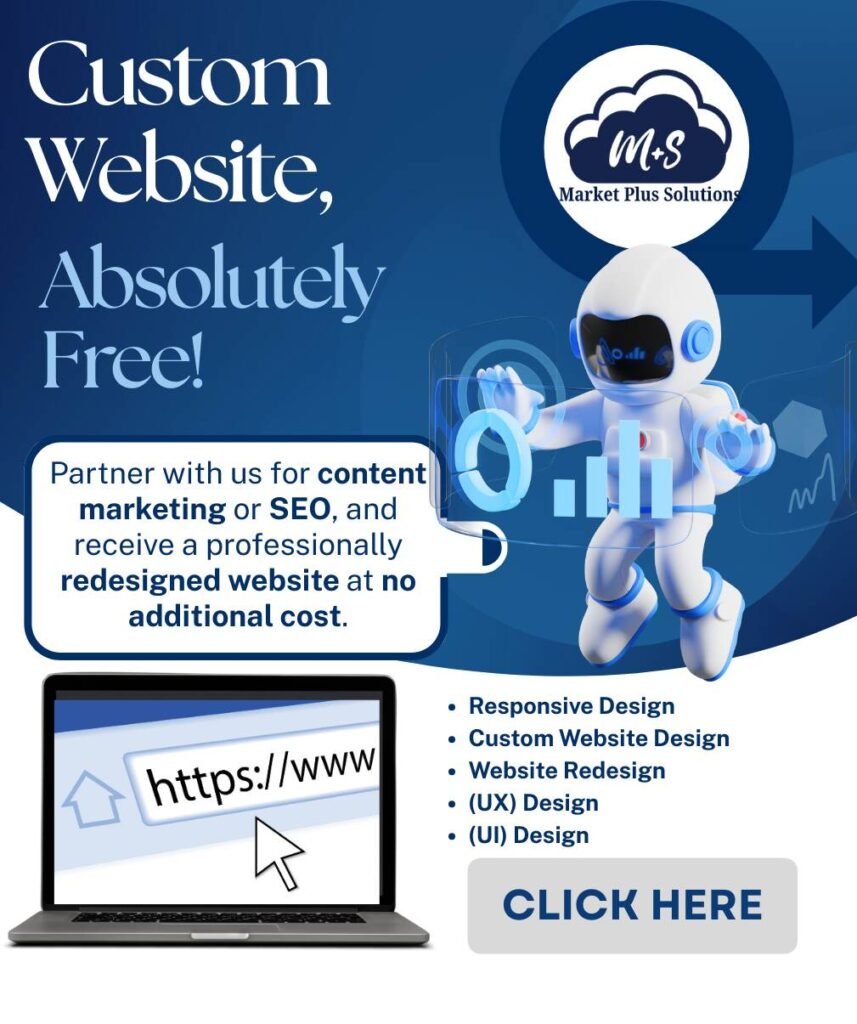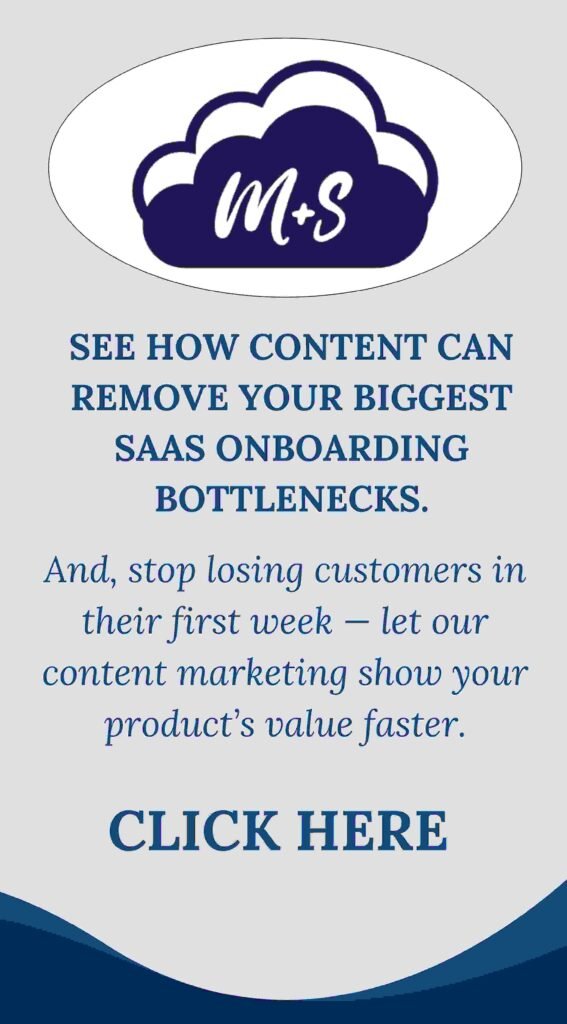Why SaaS Onboarding Bottlenecks Matter
On paper, your onboarding might look flawless. Activation rates are steady, dashboards are glowing green, and churn sits comfortably “within industry averages.” But those metrics can be deceptive. Hidden SaaS onboarding bottlenecks — the subtle friction points buried deep in user journeys — often escape standard reporting. And they’re costly.
Research on SaaS adoption consistently shows that the first week is critical: a confusing or overwhelming onboarding experience dramatically increases the likelihood of early abandonment. ProductLed reports that 40–60% of new users will try a product once and never return — meaning you can hit every KPI and still bleed revenue potential, lose upsell opportunities, and erode lifetime value without a single red flag in your analytics (ProductLed, 2025).
In 2025, these bottlenecks are no longer just the obvious “missing tutorial” or “slow signup” issues from the early SaaS era. They’ve evolved. With AI-assisted workflows, increasingly complex integrations, and rising user expectations, many onboarding failures are now hidden in moments of silence — the unanswered support ticket, the delayed first “aha” moment, the disjointed handoff between sales and customer success.
This isn’t about patching surface cracks.
It’s about diagnosing the invisible points of friction that quietly derail adoption, stall expansion, and cap growth before it even begins.
The Hidden Bottlenecks That Matter Now
Most SaaS onboarding audits still focus on the same legacy friction points: too many steps in sign-up, unclear tutorials, or missing tooltips. But in 2025, SaaS onboarding bottlenecks have evolved into more nuanced — and often invisible — killers of retention. They’re buried in algorithmic misjudgments, cross-team handoff gaps, and subtle UX mismatches that never show up in your top-line dashboards.
The danger? These modern bottlenecks often affect your most valuable users — the ones primed for long-term adoption and upsell. And because they hide inside automated workflows, they slip past even experienced product managers until the damage is done.
Let’s unpack five of the most critical friction points emerging right now, starting with a trend that’s reshaping onboarding playbooks — and not always for the better.

1. AI Over-Personalization That Backfires
In 2025, AI-driven onboarding is table stakes. In theory, it should remove friction by adapting flows to a user’s role, context, and goals. In practice, it often misreads intent and creates new SaaS onboarding bottlenecks: power users get hand-holding tutorials; first-timers get dropped into advanced setup. When personalization is wrong, trust erodes and users disengage. Research on customer experience warns that while good personalization lifts outcomes, getting it wrong pushes customers to competitors—it’s a “hygiene factor” that must be right. McKinsey & Company
Why these misfires happen: algorithms act with high confidence on incomplete or noisy signals, and most teams don’t instrument whether the personalization decision itself was correct—only whether the aggregate activation rate moved. UX guidance from Google’s People + AI Guidebook recommends designing for uncertainty (e.g., asking clarifying questions, exposing confidence, and avoiding irreversible automated choices) precisely because AI can make confident but wrong inferences. Pair with Google
There’s also a growing trust gap around AI. Salesforce’s State of the AI Connected Customer finds rising expectations alongside increased scrutiny of how AI uses data; customers expect helpful, not creepy or irrelevant, tailoring—raising the cost of poor personalization during onboarding. Salesforce
What to do instead (human-in-the-loop personalization):
Validate intent early. Insert a lightweight role/goal prompt or preference check before branching into advanced paths; PAIR recommends explicit user input when confidence is low. Pair with Google
Use guarded fallbacks. When signals are ambiguous, default to a safe, general path and offer a visible “Switch track” control so users can self-correct. Pair with Google
Instrument the decision, not just the outcome. Track drop-offs by personalization branch (which rule/segment the user hit) so you can spot harmful rules quickly. Twilio Segment emphasizes shortening time-to-value with cleaner data and real-time signals—use those to refine branching, not to over-confidently lock users in. Segment
Keep humans in control. Broader AI guidance (and even policy research) stresses maintaining human oversight for decisions that affect user progress; design your flows so support or CSMs can override misrouted journeys. U.S. Department of Education
Handled well, AI-assisted onboarding accelerates adoption. Handled carelessly, it creates invisible landmines—confident wrong turns that your dashboards won’t flag until churn shows up later. The fix isn’t abandoning personalization; it’s designing it responsibly with uncertainty checks, clear escape hatches, and measurement at the decision level. Pair with Google
2. Instant Value Pressure
We’ve entered the age of the impatient user. One-click trials, freemium models, and AI copilots capable of delivering answers in seconds have rewired expectations across the SaaS market. New users don’t just want to understand your product quickly — they expect to experience its value almost immediately.
The old benchmark of delivering first value within the first week is obsolete. Modern product-led companies are now designing for time-to-value in hours — sometimes even minutes. A prospect who signs up at 10:00 a.m. often expects tangible results before lunch. Anything slower risks becoming a SaaS onboarding bottleneck that kills momentum before it begins (Segment, 2025).
Yet many onboarding flows are still optimized for efficiency rather than immediacy. Steps are fewer and cleaner, but the “aha” moment is still buried deep — after account setup, tutorials, integrations, or complex configuration. Even if everything runs smoothly, the user feels they’re being asked to commit effort before seeing proof the product is worth it.
The danger isn’t always visible churn — it’s silent abandonment. Users don’t always cancel; they simply stop logging in, letting trials expire without further engagement. This is a hidden leak in the funnel, and because most dashboards focus on completed activations, the size of the problem is often underestimated. In fact, 40–60% of new users use a product once and never return (ProductLed, 2025).
The fix is to front-load value. Restructure onboarding so that the user experiences a meaningful win early, even if it’s partial or simulated:
Show a dashboard with mock insights based on minimal input.
Pre-load sample data so key features are usable immediately.
Offer a one-click workflow that demonstrates the core value proposition in under a minute.

3. Cross-Channel Confusion
In 2025, SaaS onboarding bottlenecks are no longer confined to clunky sign-ups or missing tutorials — they also emerge when onboarding journeys break across devices.. A buyer might first discover your product on their phone during a commute, explore features on a work laptop at midday, and wrap up the process on a tablet in the evening. Some will even toggle between multiple environments — a web app, a mobile app, a browser extension, and a customer portal — all before they’ve fully activated.
The expectation is simple but non-negotiable: perfect continuity.
No matter where they log in, users expect their progress, preferences, and context to be preserved exactly as they left them. Anything less becomes one of the SaaS onboarding bottlenecks that erodes trust and disrupts momentum.
The reality? Many SaaS products still fail this test. Mobile onboarding flows often lack feature parity with desktop versions. Web and app states fall out of sync. Trial progress made in one channel doesn’t always appear in another. In some cases, critical features or integrations are available only in one environment, forcing users to restart steps, re-enter data, or duplicate work.
This isn’t just a UX flaw — it’s a trust breaker. Inconsistent onboarding signals to users that the product is not fully integrated or enterprise-ready. For B2B buyers, that raises questions about stability and scalability. For individual users, it breeds frustration and makes alternative solutions look far more attractive.
Research on cross-platform analytics shows that delivering consistent, unified experiences across devices directly improves activation and retention rates because users stay engaged when progress is preserved and friction is minimized (Userpilot, 2024). Effective onboarding can also boost customer retention by up to 50% (UserGuiding, 2024), underscoring how costly cross-channel gaps can be.
The most competitive SaaS companies are tackling this with true cross-channel orchestration — not just responsive design, but unified state management and real-time sync across every touchpoint:
State persistence: If a user completes 60% of onboarding on their phone, they see exactly 60% done when they log in later on their laptop.
Feature parity: Core onboarding functions and integrations must be available across all major channels.
Session continuity: No repeated steps, no missing context, no friction.
4. Silent Subscription Fatigue
By 2024, the average consumer already managed over eight active subscriptions across work and personal life, from design tools to AI copilots to niche productivity apps (Whop, 2024). For many professionals in SaaS-heavy industries, the number is often higher. Every new product now competes for the same limited mental and financial bandwidth.
This saturation creates what behavioral economists call a subscription ceiling — an internal limit on how many recurring payments a person or company is willing to tolerate. Once that ceiling is reached, every additional subscription is met with subconscious scrutiny: Do I really need this? Will I use it enough to justify the cost?
This is where onboarding friction becomes lethal. In an era of subscription fatigue, even small irritations — an unexpected credit card prompt, an extra verification step, a clunky integration — can turn into SaaS onboarding bottlenecks that push users away before they’ve even committed. Unlike traditional churn, this is preemptive churn: it happens quietly, often before the trial ends, and rarely appears in urgent retention metrics.
B2B adoption is especially vulnerable. When procurement processes and budget reviews already slow decision-making, any extra friction during onboarding can tip the balance toward “no.” Industry research on digital adoption shows that ease of onboarding consistently ranks among the top three factors influencing long-term retention and expansion (G2, 2024).
Winning in this environment means eliminating hesitation moments from the onboarding flow:
Accelerate time-to-value so users experience a meaningful win before they reach the subscription decision point.
Showcase ROI early, using real or simulated data to make benefits tangible from day one.
Make the start effortless, with minimal form fields, frictionless integrations, and optional payment details until value is clear.
When subscription fatigue is the norm, onboarding can’t just be functional — it has to preemptively prove that the product deserves a spot in the customer’s crowded mental and financial budget. By the time the payment conversation happens, the “yes” should already be obvious.

5. Over-Complex Integrations
In 2025, integrations aren’t an “advanced setup” extra — for many SaaS products they’re part of day-one onboarding. Customers expect connections to CRMs, data warehouses, and AI pipelines to be seamless, fast, and reliable because faster time-to-value (TTV) drives adoption and retention. Twilio Segment highlights that onboarding’s goal is to make users see value as swiftly as possible; quicker activation correlates with higher lifetime value. Twilio
The reality is far messier. Integration flows are often built for technical users: opaque API steps, unclear docs, and third-party approvals create immediate friction. Slow or partial data syncs delay the “aha” moment and stall momentum — classic SaaS Onboarding Bottlenecks. Even vendors in the data space warn that slow customer data onboarding drags out TTV and derails early confidence. Osmos.io
The stakes are high in the first session: 40–60% of new users try a product once and never return. If their first experience is “we’ll email you when your data is ready,” you’ve likely lost them. Front-loading a visible win matters. Productled.com
There’s also evidence that getting integrations and onboarding right materially improves activation. After implementing a tighter onboarding system with Twilio Segment, Halp increased activated sign-ups from 14% to 58%, showing how better orchestration and faster setup change outcomes. Twilio
What leading teams do instead (integration-first onboarding):
Guided, no-code connectors for popular platforms to cut technical steps and reduce TTV.
Parallel paths so users can explore core features while data syncs in the background (don’t hold value hostage to a long import).
Transparent progress cues (status, ETA, what’s next) to maintain momentum rather than parking users in uncertainty.
Bottom line: Integrations shouldn’t block activation — they should prove your product’s value from the first login by accelerating a clear, early win. If they don’t, they’re not just technical debt; they’re revenue-leaking onboarding friction.
Conclusion: Fix the Invisible Friction Before It Kills Growth
Most SaaS leaders think onboarding is a “set it and forget it” process — once activation rates look healthy, it’s back to building features. But as we’ve seen, SaaS onboarding bottlenecks in 2025 aren’t obvious sign-up forms or missing tooltips. They’re subtle, systemic points of friction that live inside AI misjudgments, delayed value delivery, fragmented cross-channel experiences, subscription fatigue, and clunky integrations.
These aren’t minor inconveniences. Left unchecked, they bleed retention, slow expansion, and quietly erode lifetime value. And because they hide in aggregate metrics, by the time you notice the impact, the churn is already baked into your revenue curve.
The companies that will win this decade aren’t those with the flashiest onboarding videos or the shortest sign-up forms — they’re the ones obsessed with eliminating every invisible drop-off before it happens. That means:
- Measuring what actually matters — not just activation, but the quality of the user’s journey.
- Designing for immediacy and trust, so users experience proof of value before they even think about cancelling.
- Making onboarding a living system, continuously tested, adapted, and improved as expectations evolve.
In a saturated, high-velocity SaaS market, onboarding is no longer just the front door — it’s the foundation of growth. Treat it with the same strategic rigor as your core product roadmap, and you won’t just avoid bottlenecks — you’ll turn onboarding into your most reliable growth engine.

